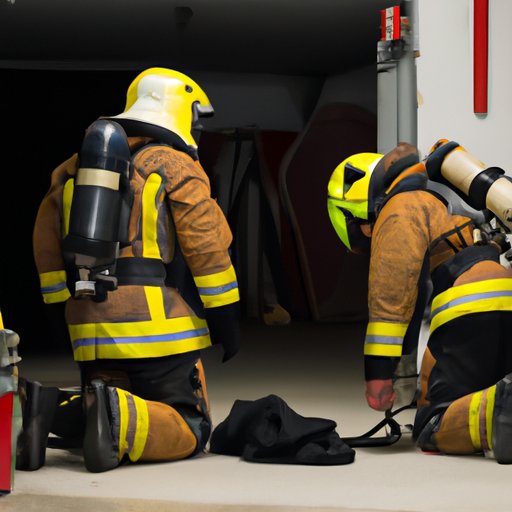Understanding PFAS: Impact on Firefighters and Foam Alternatives
Per- and polyfluoroalkyl substances (PFAS) are chemicals of concern due to their environmental persistence and potential health risks. Commonly found in firefighting foams, PFAS pose significant risks to firefighters. This article examines the impact of PFAS on firefighters and explores safer foam alternatives.

What Are the Health Risks of PFAS for Firefighters?
Firefighters are at increased risk of PFAS exposure due to their presence in many firefighting foams. These chemicals can accumulate in the human body, potentially leading to serious health issues such as cancer, liver damage, and immune system problems. Firefighters, already exposed to numerous hazards, face additional risks from PFAS during training and emergency responses.
As of May 2025, Illinois law mandates careful monitoring of PFAS levels in firefighting foams. In Chicago, firefighters are particularly vulnerable during training exercises and emergency situations where aqueous film-forming foams (AFFF) are used. These foams, while effective, contain PFAS compounds that can have long-term health effects.
What Legal Actions Can Firefighters Take Regarding PFAS Exposure?
With increasing awareness of PFAS dangers, legal actions against manufacturers of PFAS-containing foams have surged. Firefighters and their families have filed lawsuits seeking compensation for health issues linked to PFAS. Legal precedents from cases involving other toxic substances provide a framework for these actions. Firefighters in Chicago and beyond may be eligible for compensation for medical expenses and other damages.
In Chicago, legal actions are bolstered by scientific evidence linking PFAS exposure to health problems. Firefighters considering legal action should consult experienced attorneys specializing in environmental and occupational health law to navigate these complex cases.
What Are the Alternatives to PFAS-Containing Foams?
In response to PFAS concerns, researchers and manufacturers are developing firefighting foams without these harmful chemicals. Alternatives like fluorine-free foams aim to offer the same fire suppression effectiveness without health and environmental risks. Regulatory changes and industry initiatives are promoting the use of PFAS-free foams, especially in training and non-critical applications.
Transitioning to safer foams is crucial for protecting firefighters and the environment. Fire departments in Chicago are encouraged to adopt these alternatives to safeguard their personnel and reduce environmental impact.
What Challenges Exist in Switching to PFAS-Free Foams?
Adopting PFAS-free foams presents challenges, such as ensuring these alternatives meet performance standards for effective fire suppression. Fire departments must balance safety with operational effectiveness. The transition may require training and adjustments to protocols, which can be resource-intensive.
Cost is another consideration. While PFAS-free foams may be more expensive initially, the long-term health and environmental benefits can outweigh these costs. Fire departments should evaluate financial implications and explore funding sources to facilitate the transition.
FAQs About PFAS and Firefighting Foams
What are PFAS, and why are they used in firefighting foams?
PFAS are man-made chemicals valued for their water and grease-resistant properties. In firefighting foams, they help smother fires involving flammable liquids. However, their persistence and health risks have led to scrutiny and the development of safer alternatives.
How can firefighters protect themselves from PFAS exposure?
Firefighters can reduce PFAS exposure by using personal protective equipment (PPE) and following decontamination procedures. Transitioning to PFAS-free foams and minimizing exposure during training can also help.
Are there regulations governing the use of PFAS in firefighting foams?
Yes, many jurisdictions have regulations limiting or banning PFAS-containing foams, especially for training. These regulations aim to protect health and the environment by encouraging safer alternatives. Fire departments should stay informed about local regulations.
What legal options are available for firefighters affected by PFAS exposure?
Firefighters with health issues from PFAS exposure may seek compensation through lawsuits against foam manufacturers. Consulting an experienced attorney can help individuals understand their rights and navigate the legal process.
What are the environmental impacts of PFAS-containing foams?
PFAS-containing foams can contaminate the environment, persisting in soil, water, and air. This can lead to widespread contamination and affect ecosystems. Switching to PFAS-free foams can help mitigate these impacts.
How Can We Protect Firefighters and the Environment?
The impact of PFAS on firefighters and the environment is urgent. Fire departments, regulatory bodies, and manufacturers need to collaborate to transition to safer alternatives. If you are a firefighter or part of a fire department in Chicago, consider exploring PFAS-free foam options and implementing protective measures. By taking proactive steps, we can protect our firefighters and preserve the environment for future generations.



